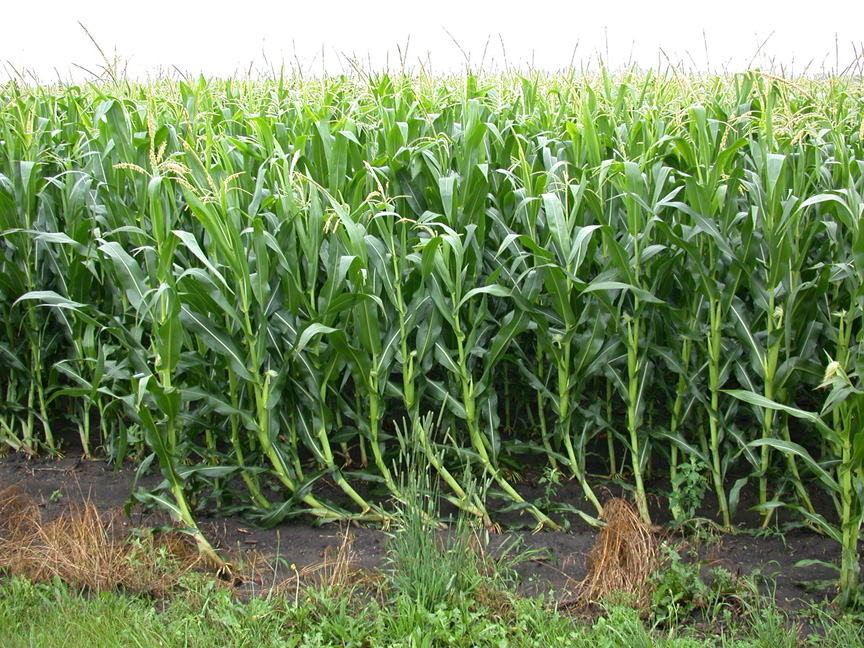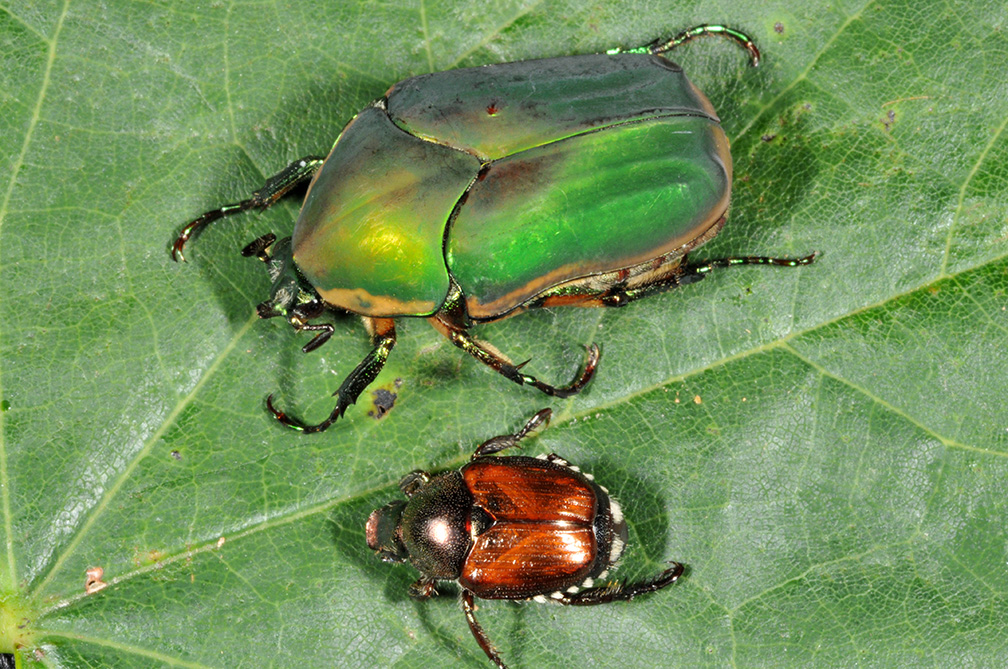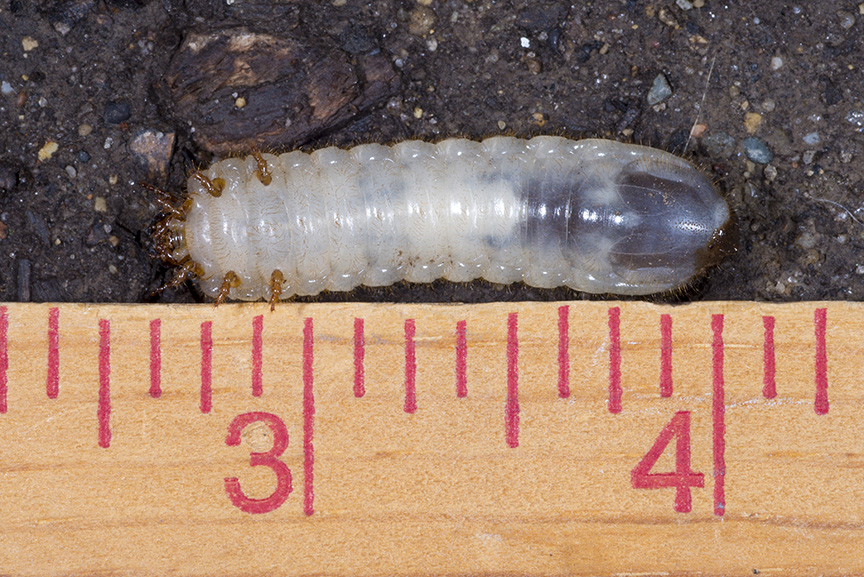What are these “huge” Japanese-like beetles seen around homes, golf courses, parks and farmsteads? No, a mutation of the Japanese beetle has not occurred but rather another related scarab, the green June beetle has been actively emerging. These insects are strong fliers and active during the daylight hours,
The large, iridescent, green June beetles feed on many plants, as do the Japanese beetle, but they are especially fond of ripe fruit. Ripening peaches, berries, plums, etc. may be subject to clusters of these pests. The beetles may occasionally feed on sweet corn tassels and silks, but significant damage has not been reported. The green June beetle grub, as with the Japanese beetle grub, feed-on decaying matter and various types of plant roots in the soil. However, the green June beetle larva is much larger and creates tunnels as they move about in the soil. These tunnels can significantly disrupt turf and grass pastures. Bottom-line, be alert to these “pretty” beetles attempting to cut into your fruit harvest. But don’t worry about them as a corn and soybean pest.





